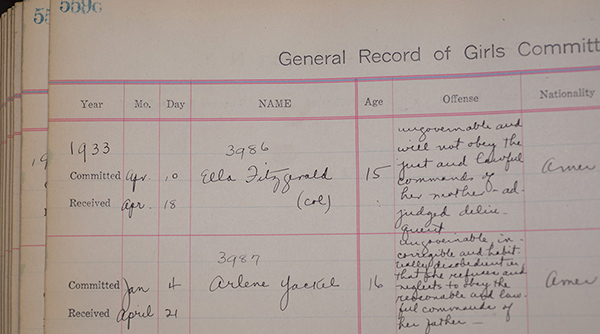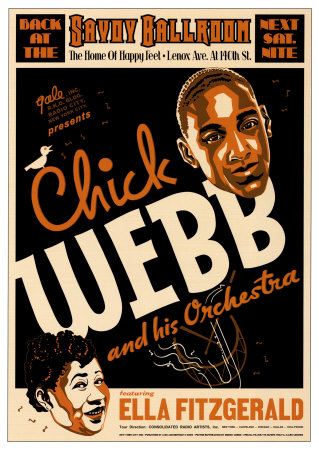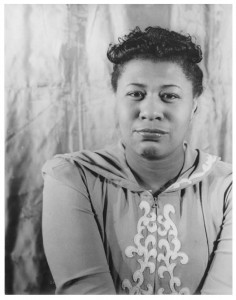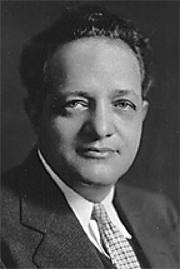On April 10, 1933, according to records at the New York State Archives, Westchester County judge George W. Smyth sentenced a fifteen-year-old “colored” girl named Ella Fitzgerald to the New York State Training School for Girls in Hudson, NY because she was “ungovernable and will not obey the just and lawful commands of her mother.”
Judge Smyth, who would eventually serve thirty years as a Children’s Court judge, believed that parental guidance and early training in the home were the bedrock of a child’s social development. In 1933, he sentenced ten girls between the ages of 12 and 15 to the Hudson reform school, the only state juvenile institution that accepted both black and white children. Seven of these girls were “colored.”
Fitzgerald’s arrival at Hudson was recorded across the span of two pages in a “General Record of Girls Committed to the New York State Training School for Girls” log book, as were the arrivals of six other girls — Emmabelle Cogswell, Anna Mae Cater, Doris Bazmore, Evelyn Spagner, Marion Wilson and Anna Perry — because they ran away from home, were “morally impaired,” were “incorrigible” or “wayward,” or violated “the lawful demands” of their mothers or fathers.
Ella Jane Fitzgerald was born in Newport News, Virginia, on April 17, 1917. Information about her early life is sketchy and biographical accounts sometimes differ on details. For the most part, she was reported to be an excellent student at school and, encouraged by her stepfather, she loved music and wanted to be a dancer. She learned dance steps at the Savoy ballroom and eventually taught dances such as the Suzie Q. After Fitzgerald’s mother died unexpectedly in early 1932, biographers’ note that her mother’s sister moved the fifteen-year-old to Harlem, fearing physical mistreatment from the young girl’s stepfather. Fitzgerald soon dropped out of junior high school and, according to several sources, worked briefly as a lookout for a local brothel and her aunt’s numbers-running racket.
The Training School’s “committed girls” log book at the State Archives in Albany, New York, shows that Fitzgerald arrived there on April 18, 1933, about a week after Judge Smyth, adjudicating her delinquent, imposed a standard sentence of three-to-five years.

Girls entering Hudson were initially placed in an administration building where they were examined and classified for assignment to one of several cottages. Living quarters were overcrowded and, for at least a few months during Fitzgerald’s stay, incoming girls were routinely examined and held in quarantine for ten days. Black girls were housed mainly in two segregated cottages, a practice that persisted until the late 1940s. New York Times journalist Nina Bernstein reported in 1996 that Fitzgerald was even excluded from the school choir, which was for white girls only.
Fannie French Morse was the superintendent when Fitzgerald was sentenced to the training school. Like prior and future superintendents, she was an advocate of “progressive” reforms, largely those aimed at improving the “well-being” of girls.
In the early 1930s, Morse, who introduced Hudson’s girls to gardening, farming and other outdoor activities, set in motion one of her grandest-scale projects. At a professional conference in Philadelphia, she heard Dr. J.L. Moreno, an Austrian psychotherapist who had recently migrated to the United States, describe “sociometric” work he had done with prisoners at Sing Sing, a men’s prison in Ossining, New York.
Morse was impressed with Moreno’s efforts at measuring the relationship between social structures and psychological wellbeing. She invited him to visit Hudson and quickly hired him as Director of Research. Moreno, along with his colleague Helen Hall Jennings, then a Columbia University graduate student, began gathering data on girl-girl and girl-staff interactions.
A few weeks before Fitzgerald arrived at the training school, the Hudson Daily Star reported on the 1933 annual meeting of the Medical Society of the State of New York, observing that Moreno’s “psychological geography” research captures “the interweaving of emotional streams of attraction and repulsion among individual comprising a whole community.”
Moreno and Jennings collected data on 500 girls, perhaps including Fitzgerald. In a report published in 1934, Moreno stated that the purpose of the research at Hudson was to “determine the psychological process of community.”
Moreno wrote, “Although separately housed [segregated], there are attractions and repulsions between white and colored girls which gravely affect the social conduct of this community. The ‘emotional currents’ radiating from the white and colored girls, and vice versa, has to be ascertained in detail, their causes determined, and their effects estimated” (emphasis in original). Sex between black and white girls and plans for escape were two of the “radiating currents” examined in Moreno’s study.
In addition to Hudson’s racial segregation, Bernstein also reported that Fitzgerald and other girls were subject to physical abuse and solitary confinement, practices verified in the institution’s annual reports as well as in state investigations. “She hated the place,” former superintendent Thomas Tunney told Bernstein. “She had been held in the basement of one of the cottages once and all but tortured.”
Shortly after Fitzgerald’s death, cultural critic Margo Jefferson wrote in the New York Times, “That voice never did give us intimations of the stepfather who abused her when her mother was dead; of the aunt who rescued her, then had no time or money to care for her; of Ella herself as a teenage truant who did time in a New York State reformatory for girls, where discipline was instilled though beatings and solitary confinement. When she ran away, she went from wayward girl to urchin, shuffling alone through the streets of Harlem, singing and dancing for small change, sleeping wherever she could find a night’s bed and board.”

The “Official Site of the First Lady of Song” website, also states that Ella ran away from Hudson. We know she could stand her ground because, as an 11-year-old, one biographer has noted, she pushed away a young white boy the first time she was called “a nigger.” So an escape from Hudson appears consistent with that kind of assertiveness, as well as with popular imagination. Others, including Bernstein, say she was paroled to bandleader Chick Webb, but corroboration concerning how she actually left Hudson is missing from records at the State Archives.
Her biographers appear to agree on this: A fifteen- or sixteen-year-old Ella Fitzgerald returned, in a disheveled and homeless state, to New York City in late 1933 or early 1934. Shortly thereafter, she tried to display her dancing talents at the Apollo on 125th Street before taking its famous stage to sing. Soon, she started singing regularly with drummer Tiny Bradshaw’s band at the less-well-known Harlem Opera House. And, at the age of seventeen, within a year of leaving Hudson, Fitzgerald was singing and recording with the swinging Chick Webb and his Orchestra, where she quickly took her first steps toward being America’s “First Lady of Jazz.”
Ella Fitzgerald passed away on June 15, 1996 at the age of seventy-nine, leaving no autobiography or recorded interviews about her time in Hudson. The Hudson Girls Training School’s records for the years 1933 and 1934 are largely missing from the New York State Archives.
Further reading:
——- (1960). Early Training in the Home Helps Keep Children Out of Juvenile Courts, Says Judge George W. Smyth. Dobbs Ferry Sentinel. April 15.
Bernstein, Nina (1996). The Gap in Ella Fitzgerald’s Life. The New York Times. June 23. Reprinted in Gourse, pp. 9-12.
Gourse, Leslie (1998). The Ella Fitzgerald Companion: Seven Decades of Commentary. New York: Schirmer Books.
Jefferson, Margo (1996). Ella in Wonderland. New York Times. Reprinted in Gourse, pp. 173-176.
Moreno, J.L. (1953). Who Shall Survive? Foundations of Sociometry, Group Psychotherapy, and Sociodrama, Second Edition. Beacon, NY: Beacon House, Inc.
Nicholson, Stuart (1994). Ella Fitzgerald: A Biography of the First Lady of Jazz. New York: Charles Scribner’s Sons.


